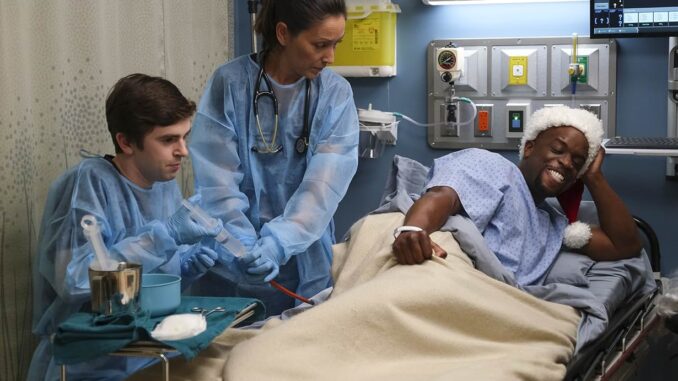
In most medical dramas, surgery is the climax — the decisive, high-stakes moment where skill determines survival. In The Good Doctor, surgery is not just an ending; it’s a beginning. Every operation, from the simplest procedure to the most complex, becomes a lens through which we see the deeper truth: that medicine is as much about humanity as it is about science.
Dr. Shaun Murphy enters each surgery with the precision of a master craftsman. His hands are steady, his mind a blueprint of anatomy and strategy. But the camera rarely stays only on the incision. It lingers on the patient’s face before anesthesia, on the family in the waiting room, on the exchange of glances between surgeons. The show reminds us that behind every technical triumph lies a human story — one that doesn’t end when the sutures are tied.
Some lessons are joyful. A patient wakes, finds their voice still intact, and the relief radiates through the room like sunlight. Others are bittersweet — a life prolonged but forever changed, a choice made that carries as much loss as it does hope. These are the moments where the show refuses to sanitize reality. It embraces the messiness of what it means to heal, knowing that healing is rarely complete.
Shaun himself learns from each case, though not always in ways that can be measured on a chart. A successful surgery might teach him about trust — trusting a colleague’s judgment, trusting a patient’s wishes over his own instincts. A failure might teach him about humility, about the limits of even the most brilliant mind. Over time, these lessons form a parallel curriculum, one in which medical expertise and human empathy are given equal weight.

The supporting characters are part of this education. Dr. Lim teaches the discipline of leadership under pressure. Dr. Park offers a reminder of the human cost behind every medical statistic. Claire shows that kindness is not a weakness, but a force that can shape outcomes as surely as skill. Together, they help Shaun — and us — see that every surgery is more than a procedure; it is a meeting point of lives, values, and choices.
The cinematography underscores this theme. The surgical lights cast a halo-like glow, the instruments gleam under their beams, but the real illumination comes after — in the conversations, the reconciliations, the goodbyes. These are the frames where humanity asserts itself, reminding us that a scalpel may repair the body, but it is understanding, compassion, and respect that tend to the soul.
By the end of each episode, we’re left with the sense that we have not just witnessed medical skill, but shared in something profoundly human. The world of The Good Doctor is one where every surgery is both a technical challenge and a moral dialogue, a chance to affirm that healing is as much about hearts as it is about bodies. And perhaps that is the show’s greatest gift: the reminder that in medicine, as in life, the most important lessons are not found in the textbooks, but in the space between one human being and another.
